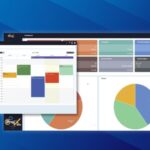For the second month in a row, CI+SSI has gathered prominent members of The ASCII Group for a roundtable discussion on frameworks for running a business, such as the Entrepreneurial Operating System (EOS).
The ASCII Group, founded in 1984, is, of course, the original IT community of the channel, uniting managed service providers (MSPs) across North America.
This month, we ask two influential MSPs within The ASCII Group whether they follow EOS (or any other framework), what processes they’ve put in place within their own organization and how, if at all, their process-driven approach has enriched their client relationships and bolstered their profitability.
Here, in Part 2 of a two-part series, we offer thoughts from ASCII Group members Randy Carbone, partner, E3 IT Services, and Angel Rojas, Jr., president and CEO, DataCorps.
Related: Frameworks for Running Your Business, Part 1
Commercial Integrator: What kind of framework, if any, do you run your business in accordance with? Do you leverage the Entrepreneurial Operating System (EOS) or any other defined system to be sure your company has a strong internal foundation?
Randy Carbone: We use a hybrid approach, focused on Powered Services Pro with pieces of the Entrepreneurial Operating System (EOS) and ITIL principles. Together it allows us to align our leadership team and maintain focus on our core goals and ensures our service delivery processes are structured and client focused.
We have effectively used Powered Services Pro to help us market, sell, and deliver IT solutions. These frameworks collectively provide the structure and consistency needed for our ongoing success.
Angel Rojas, Jr.: At DataCorps, we operate under a unique, integrated framework we’ve called The DataCorps Way. This framework combines continuous improvement strategies from the Toyota Production System (Lean), Peter Senge’s Learning Organization (from his book The Fifth Discipline), U.S. military processes such as the Military Decision-Making Process (MDMP), After Action Reviews (AAR), Commander’s Intent, Servant Leadership, and Professional Development.
This fused methodology forms a sustainable foundation that is adaptable and resilient — well-suited for the VUCA (Volatile, Uncertain, Complex, and Ambiguous) business world we are transitioning to today. We made the deliberate decision to adopt this transformation strategy to position our team competitively in the 5th Generation Digital Economy.
The MDMP guides us in making deliberate, well-communicated facts and decisions informed by data, while the concepts of servant leadership and professional development respect our team members and are foundational components of our company values.
Lean and Learning Organization principles, processes, and systems help us eliminate non-value-added activities, foster systems thinking, and encourage continuous learning and improvement focused on serving each client’s individual technology needs.
Altogether, The DataCorps Way strategically enables us to create a culture of sustained growth and adaptability.
CI: Describe some of the processes that you’ve put into place in your business to be sure your decision-making is not ad hoc. What accountability structures do you have in place to be sure those processes are followed?
Carbone: We document all key processes such as client onboarding, incident response, and project management using IT Glue, ensuring clarity and accessibility. We focus on resolving key challenges and work to consistently deliver and improve services while keeping the client’s needs at the center.
Companywide improvements, such as redefining roles, implementing accountability mechanisms, and streamlining operations, have reduced open tickets by over 90% and minimized monitoring alerts to proactively manage issues.
We are currently working on internal AI integration to help us further identify patterns with issues and better service our clients.
Rojas: To ensure structured and consistent decision-making, we have adopted a modified version of the Military Decision-Making Process (MDMP).
The MDMP provides a structured framework that supports team execution by using problem solving tools and processes, decision making, and work escalation processes that facilitate effective Specific, Measurable, Actionable, Realistic and Time-Based (SMART) criteria communication.
Our approach prioritizes alignment across the enterprise — including clients, vendor partners, and our team. We have a business management system that’s consists of three daily Level 1 Technician Team management huddles, a daily Level 2 Leadership Team Huddle, and two weekly Level 3 Company Huddles.
These daily and weekly huddles serve as process control mechanisms to address problems and opportunities in real-time.
This management system also promotes effective communications, training, leadership development, and accountability that ensures we are continuously improving each day as a unified team toward our key performance actions (KPAs) and key performance indicators (KPIs).
CI: Give a concrete example of how being a process-driven company has improved your success, driven greater profits or strengthened client relationships.
Carbone: A key improvement has been a greater integration of Autotask CRM into our workflows, enabling streamlined project and proposal management. At the time of writing, accountability and proactive issue resolution have reduced open tickets by 90% and decreased monitoring alerts by 97.5%. These operational enhancements have strengthened client trust and satisfaction, leading to better retention and profitability.
By prioritizing team expertise and aligning customer visions with company goals, we’ve demonstrated the power of a process-driven approach in delivering exceptional results.
Rojas: Our process-driven focus has led to substantial efficiency gains, including a percentage reduction of over 70% in our service ticket lead times; an increase in standard work from 5% to 30%, with a goal to reach 80%; and a reduction in our new team member onboarding process from 30 days to 10 days.
Reductions in both service ticket cycle times and overall process lead times have fortified client relationships and contributed to a Net CSAT Score of 97.1, reflecting high client satisfaction with the consistent, high-quality service we deliver.
Editor’s Note: What business-centric topics relevant to both integrators and MSPs would you like to see in upcoming editions of “The Service Desk”? Please email [email protected] and share the burning questions that you’d like members of The ASCII Group to address.













